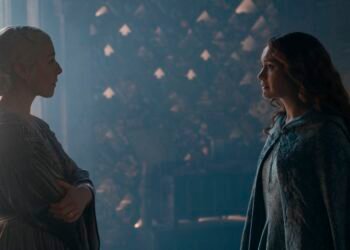Cute, adorable, and utterly unafraid to kill your entire party in a single turn, Atelier Ryza Ever Darkness & the Secret Hideout is a heartwarming coming-of-age story backed with wide array of mechanics that all feed into the core concept of the game: Alchemy. Gather your materials and synthesize your items carefully, because if you don’t have the right gear with the right properties the monsters will show you no mercy. Read on to see if this installment of the long running Atelier series is right for you.
Atelier Ryza: Ever Darkness & the Secret Hideout
Game Features
- Brand new Atelier world to explore
- Master the complex Synthesis system to harness the power of alchemy
- Gathering system where the items gathered depend on the tool used
- For the first time in an Atelier title combat is in real time
- Create miniature worlds to harvest materials and battle monsters, then share them with your friends
Story and Setting
Atelier games tend to run in trilogies, occasionally you’ll have an exception, but they’re fairly regular in this regard. Ryza is a brand new Atelier world and thus hopefully the start of new trilogy. The advantage here of course is that if you’ve never played an Atelier game, then this is an easy game to get into as there’s no background lore to confuse you. The disadvantage is that this is a standard Atelier story so if the stories of the previous games don’t really appeal to you, this one won’t either.
The story here follows the adventures of Ryza, a girl on the edge of adulthood who feels trapped in her small village. A chance encounter with a wandering alchemist lights a passion in her and she begins to learn alchemy in defiance of those around her, eventually proving she’s ready to be treated as an adult.
Now if you’ve played other Atelier games or read/watched their stories this will sound very familiar. In fact it almost perfectly mirrors the start of Mysterious Journey, this isn’t necessarily a bad thing though. Certain game series have built up expectations around themselves, such as expecting to go on a globe-trotting adventure to save the world (and possibly all of existence) in a Final Fantasy game. In Atelier games you expect a mostly light-hearted tale (it’s not all fluff) about a young girl growing into a young woman while mastering the powers of alchemy. This is exactly what Ryza presents to the player, perhaps a little to well. The story isn’t bad by any measure, but it is exactly what is expected of an Atelier story.

No idea why, but barrels are always important in these games!
As for the setting this is one of the smaller ones, focusing on a small portion of an implied larger world. The gathering zones you visit all have a unique feel and look to them. Some of the areas are pretty standard, such as the Pixie Forest, but others are quite fantastical in nature. Even the more normal areas such as the Pixie Forest still have parts that feel magical. Heck, even the areas meant to be more sinister in nature still have a pretty, magical feel to them. In addition there is an overall seasonal theme of summer to Atelier Ryza, and all of the areas in the game help reinforce this.
Gameplay
Alright, so far I’ve called this game heartwarming, cute, pretty, and magical. Obviously the gameplay has to be non-challenging fluff to be able to fit in, right? Wrong. That idea is so very, very wrong. The only game that has crafting at the same level as Ryza is Eve Online, I’m not joking, and I’m not being hyperbolic. Rather than give you a 4-part thesis on the crafting system, I’ll just very lightly describe what goes into crafting a single weapon.

Huh, I wonder if the game is trying to tell me something.
Crafting/Synthesising
So you have to kill a boss and let’s say this boss has a weakness to lightning. First you have to synthesize a weapon, but to synthesize that weapon you need ingots. You don’t have any, so you have to synthesize some but don’t have any more good ore left. So off you go to an area with ore and harvest a bunch since the stats are randomized. You return to the atelier and synthesize an ingot, then you have to rebuild the ingot to ensure it has all the stats and properties you need. Oh and to rebuild, you need to sacrifice materials to generate gems and use yet more high-quality materials in the actual rebuild process. You repeat all this with several other components for the weapon. Finally you synthesize the weapon, then have to rebuild it to max out all of the stats.

And this is a mid-level recipe.
Remember how I said the boss was weak to lightning? Well now you have to craft a lightning bomb, so you go out to do some more gathering (need to have the right properties and quality after all), synthesize the item, and rebuild it. Finally you reforge (which is different from rebuild) the weapon, so you can add the lightning bomb to further increase the stats on the weapon and give it lightning elemental status. All of that is for one weapon.
So do you have to do all of that? Well, yes. Now the focus of this game is on the alchemy, as I just illustrated, so most battles are in fact a cake-walk assuming you at pay a little bit of attention to your gear. But bosses? Mini-bosses? Those encounters will crush you, sometimes in a single turn, if you do not have the proper gear with the correct properties. Very early on in the game you are told to go into a cave and find some ore. The only way to get this ore is to fight a giant version of a rock-monster. If you try and fight this monster without crafting a bomb that has defense reduction, you will lose. No amount of level grinding will enable you to win this fight, you have to use a decently synthesized bomb.
Now the game doesn’t throw the entire system at you all at once. In fact with the rock-monster example, you only have synthesis available and only a few gather areas to visit making it rather simple to deal with. As you progress through the story more and more systems open up, and the game leans on you more and more to use those systems. You can only get so far with just synthesis, but the game will ease you into things.
Combat
Every Atelier game changes the synthesis system in some fashion and Ryza is no exception. However the change that I enjoyed the most wasn’t in the alchemy system (though I do greatly enjoy the changes made there) but rather in the combat system. Prior to this the Atelier games used a turn-based system, you had a time-line showing when everyone was going to attack which would move in real-time, but when it was a player’s turn to attack everything stopped. You could then think and take your time in choosing the actions of your three party members.
Unfortunately this meant that it could take some time to win a fight even if there was no chance the monsters could even hurt you. It also meant that even though boss battles could feel tense, there was no pressure. You had all the time in the world to decide if you wanted to cast that heal spell, or attack for one more turn. In Ryza however the system is 100% real-time, and wow does it make combat feel different. You start each fight with one character activated and use the R1/L1 shoulder buttons to swap the active character. If a character’s turn comes up and they aren’t activated, they just act. You have some ability to influence their actions, but nothing too complex.
This change alone makes combat flow much faster, but then there’s the timer itself. Combat in this game is fast, you do not have time to think. It was a very rare situation that more than two seconds went by without something attacking. This doesn’t put too much pressure on you during normal fights, but it does mean that boss fights are intense. You have to have a plan going in because you only have time to react, not plan during the fight. This in my opinion is a very welcome change to the turn-based systems of the past.
Audio and Visual
This is one of the areas that Atelier Ryza actually disappoints in. Now the Atelier games have never been graphical and artistic showcases. It has always been a bit of a niche product, and one of the reasons it is still around is because they keep their art budget under control, this is not to say the game are ugly. They have a very distinct artistic style to them and while they don’t push the polygons there is plenty of detail to create a world that is pleasing to the eye.
This time around though it feels like they took a few unneeded shortcuts. The intro cinematic is a good example, as far as I’m aware, the intro cinematic has always been a short 2D animated sequence so well produced that it could be mistaken for the intro sequence to an anime. This time around we get an in-engine 3D animation. It’s not bad, just not as good as what they usually do. That’s a minor nit-pick though, what is more distracting are the animations and poses in-game.
It’s nothing major, but you’ll run across a facial expression that just look weird, or a pose during a conversation that doesn’t fit, or an animation that looks really stiff. These aren’t issues that crop up all the time, but they did happen frequently enough that it ends up being a bit distracting. Texture quality is decent, but it never really rises above that. It just has this feel that the art budget this time around got squeezed pretty hard. There’s still plenty of mystery and beauty to the world, it just has more rough edges than I’m used to.
Audio wise things are pretty good. I’m pretty sure they’ve recycled many sound effects from previous titles, but I don’t see anything wrong with that. A puni sounds like a puni, no need to re-record the sound effect if the original is good. Every action has audio feedback that makes sense which is imported for building immersion. The music is decent as well with a full orchestral sound track, not so awesome that I plan on importing the OST CD, but I am enjoying listening to it on YouTube while writing this review. The songs fit the action on the screen well and the main themes you hear in town and the gather areas never gets old or boring.
Replayability
Once more I desire to scratch out that word Replayability and replace it with Longevity. I mean yes, you can replay through the game again, but there’s not much point to it. Even a basic play-through is likely to take you 30-40 hours and that’s if you aren’t going crazy pursuing every single side-quest. The longevity in the game comes from two related but separate areas: mega bosses and synthesizing gear. After the main quest is completed there will be ultra-hard boss monsters in various locals in the game.
Beating these titans requires very specific gear and preparation to take on, and you’ll probably have to try several times to get a feel for the attacks patterns and status effects the boss has. Of course this is going to require a lot of synthesizing and I’ve already laid out how much work can go into single piece of gear. Each character has four gear slots so that means at a minimum you have to create 12 high-end equipable items, and then you have consumables to worry about. Combine all of that with the numerous side-quests, challenges available and the random worlds you can create and explore, it is very easy to sink 100+ hours into this game.
Pricepoint
If you’re using a walk-through you might be able to burn through the game in 20 hours on a first play-through, but as mentioned earlier the probable time is between 30-40 hours. That’s 30-40 hours of quality game time with little time wasted, so from a sheer dollars/time ratio this is a good buy. Value for your dollar only goes up if the systems click well enough with you that you seek to finish everything the game has to offer. I’m a bit more on the fence when it comes to the deluxe editionas all you really get for your $15 is a collection of costumes and hideout decorations. I have no idea how large an Extra Large! gem pack is, but given how easy they are to get I’d say it really doesn’t matter. My take on the Digital Deluxe is you should only get it if this game sounds perfect to you and you want to toss a few extra bucks at the developer.
Final Thoughts
This is an Atelier game through-and-through. If you are a fan of the series, go buy it now, you won’t be disappointed. If you aren’t a fan of the series, but you’re looking for an RPG that has some incredibly deep systems to explore and exploit, then I would heartily recommend this game. The planning and manipulation of properties that goes into crafting in this games is rivaled by few games on the market.
That said, there is a bit of dissonance between the story and the mechanics. While I wouldn’t say the incredibly deep and complex mechanics are at odds with the cute feel and heartwarming story, it is something to be aware of. Those looking just for a nice story might be put-off by the mechanics, and those looking for complex mechanics might get put off by the cuteness of the game. I’ll end this by saying that if you enjoy RPGs then you should give Atelier Ryza a try as there’s a lot to like here.
If you enjoyed this review be sure to check out more in Children Of Morta Review – Fighting, Fun For The Whole Family and for more Atelier, be sure to read next Atelier Lulua: The Scion Of Arland Review.
Summary: Atelier Ryza is an excellent addition to the Atelier game series. A fresh new world, complex crafting system, and a new real-time battle system all work together creating a very compelling game. Combine that with the traditional Atelier heartwarming story as well as a magical setting and you have a JRPG that is well worth your time and money.
Story and Setting (7.5)
Gameplay (8.5)
Audio and Visual (6.5)
Replayability (7)
Pricepoint (7.5)



























































